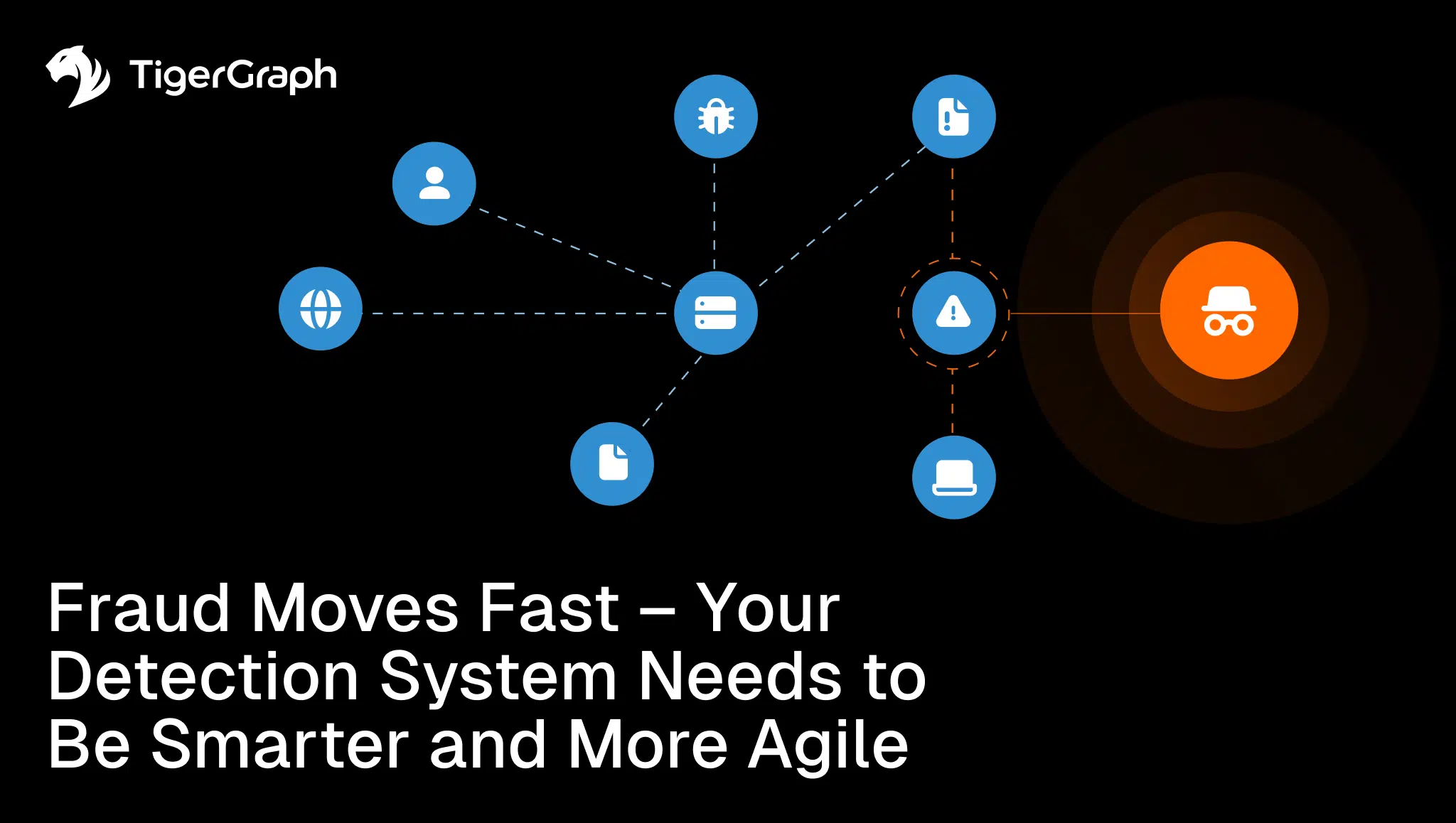Fraud Moves Fast – Your Detection System Needs to Be Smarter and More Agile
Fraud is no longer a matter of isolated bad actors or one-off schemes. Today’s threats are coming in hot as multi-layered and coordinated attacks designed to exploit gaps between systems. Sophisticated fraud rings now deploy bots, device farms, synthetic identities, and distributed tactics that adapt faster than traditional defenses. Enterprises need more than speed—they need structure, context, and real-time reasoning.
Also, fraud isn’t just faster—it’s smarter. That’s why detection must evolve from spotting anomalies to understanding behaviors. It’s not enough to flag unusual events after they happen. You need to understand how those events connect, what they signal across time, and whether they’re part of something bigger. That kind of insight requires a new kind of infrastructure—one that thinks in relationships, adapts in real-time, and scales without losing clarity.
That’s where graph technology changes the game. And it’s why more fraud and risk teams are turning to TigerGraph.
Why Traditional Systems Break at Scale
Most fraud detection systems were built for a simpler time—when risks were relatively isolated, patterns were easier to spot, and “real-time” meant the next morning’s report. Legacy architectures rely heavily on relational databases, static business rules, and batch-mode risk models, but these tools weren’t designed to connect the dots across the sprawling, fast-moving networks of modern fraud.
The challenge is threefold: First, relational databases buckle under the weight of complex queries. Detecting fraud often requires ‘joins’ across dozens of tables—crippling performance just when speed matters most. Second, batch processing introduces fatal lag. When detection runs hours behind the data, the fraudster is already gone. And third, rules-based logic—while helpful at the outset—can’t keep pace with adaptive threats. Once rules are known, they’re easily gamed.
Meanwhile, fraudsters exploit every blind spot. They fragment their activity across accounts, regions, and device profiles. They use synthetic identities and behavioral mimicry to appear legitimate. They launch slow, coordinated attacks that stay just below alert thresholds—and they count on siloed systems failing to connect seemingly benign events into a coherent, suspicious pattern.
Traditional tools weren’t built for this level of complexity, let alone at enterprise scale. And that’s why they break—precisely when you need them to work the most.
Why Graph Thinking Changes the Game
Graph analytics flips the model. Instead of asking, “Is this transaction risky on its own?” graph-based systems ask, “What is this transaction connected to—and what does that connection reveal?”
Where traditional relational databases flatten data into siloed tables, graphs preserve structure. They maintain the full web of relationships between users, devices, accounts, payment methods, and behaviors. This structure enables multi-hop reasoning—tracing suspicious patterns across several degrees of separation—without performance degradation or brittle JOIN logic.
However, not all graph systems are created equal. Most were designed for static analysis or visualization—not for real-time, enterprise-scale fraud detection. They can surface interesting patterns—but often as snapshots or in post-processing, not as live, actionable signals. These systems often slow to a crawl when faced with billions of relationships or when asked to continuously ingest, compute, and traverse simultaneously.
That’s where TigerGraph stands apart. Its real-time native graph engine is purpose-built for operational reasoning at scale. It combines distributed parallel processing, shared-variable logic, and high-speed traversal to support continuous, contextual fraud detection.
With TigerGraph, you get:
- Multi-hop traversal at sub-second latency—even across massive, deeply connected graphs, answering real-time multi-hop fraud queries in as little as 80 ms
- Streaming data ingestion for always-fresh signals and real-time visibility
- Massively parallel processing with shared-value accumulators–to deliver complex analytics fast and with scale
- In-graph computation—including pattern matching, proximity analysis, and cycle detection—executed directly in the engine, not exported to another layer
This isn’t just graph analytics—it’s a living reasoning engine that evolves with your data and surfaces insights the moment they matter. TigerGraph transforms fraud detection from a forensic process into a real-time defense strategy—scalable, explainable, and built for the complexity of modern threats.
Real-Time Detection in Action
Here’s how graph analytics works in the wild:
A device logs into five accounts in five minutes. TigerGraph checks in real time: Has this device been used before? Are those accounts linked to known bad actors? Do they share IPs, payment credentials, or usage patterns?
A credit card transaction is flagged. Instead of evaluating it in isolation, the system traverses its network of associations—previous login locations, purchase histories, merchant behavior, and time-of-day anomalies—to determine if it’s part of a broader threat.
A surge of synthetic identities floods an application portal. TigerGraph correlates shared attributes—like email domain, funding source, or referral link—and connects the dots to identify identity clusters before approvals are issued.
In each case, fraud detection isn’t just about velocity—it’s about context. And only a graph can model that context in real time.
Enterprises Need a Powerful Infrastructure to Move from Reactive to Proactive
It’s not enough to scan faster—enterprises need infrastructure that understands how fraud actually works across relationships, over time, and through behaviors designed to deceive.
To make that shift, enterprises need architecture built for reasoning, not just reporting. That means deep multi-hop traversal that holds up under scale, streaming ingestion that keeps context current, and stateful logic that tracks behavior across sessions—not just one-off events. And when new fraud tactics emerge, the system should adapt without requiring a full rebuild or downtime.
This isn’t a patch— retrofitting yesterday’s tools won’t cut it. It’s a platform built from the ground up to decipher the complexity of today’s threats and detect fraud in motion.
Fraud detection is ultimately a reasoning problem at scale to connect the dots between the login, the device, the transaction, and the broader pattern—while it’s still unfolding across a web of signals and relationships.
Graph technology is the only approach that is powerful enough to meet that challenge. It enables systems to think in relationships, not just react to events.
With graph technology, specifically TigerGraph, fraud and risk teams move from reactive alerting to proactive understanding. They gain system-level awareness, spot coordination, surface patterns, and act before fraud spreads.
Fraud is evolving, and your defenses should, too.

